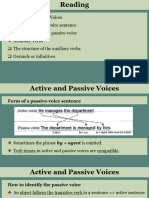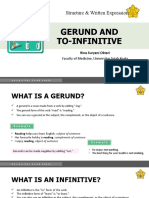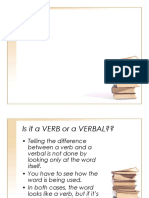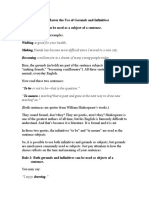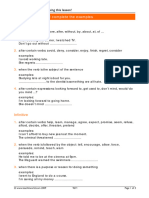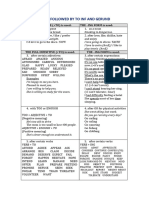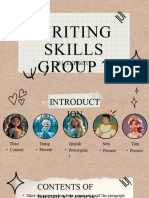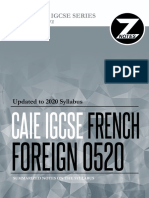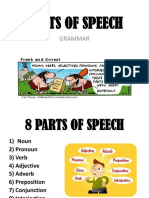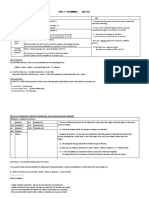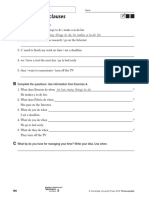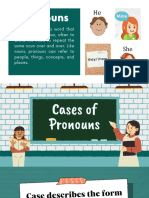0% found this document useful (0 votes)
11 views17 pagesPptienga 22
The document discusses auxiliary verbs and types of transitive verbs. It provides 3 examples of verb patterns using auxiliary verbs: 1) auxiliary verb + intransitive verb + preposition, 2) auxiliary verb + transitive verb + object, and 3) auxiliary verb + be + past participle + preposition. The document also discusses the positions of gerunds, including before a verb, after a verb, and after a preposition. Finally, it provides examples of verbs that can be followed by an infinitive or used with the subject + verb + object + to-v pattern.
Uploaded by
phamgiang18032005.ptngCopyright
© © All Rights Reserved
We take content rights seriously. If you suspect this is your content, claim it here.
Available Formats
Download as PDF, TXT or read online on Scribd
0% found this document useful (0 votes)
11 views17 pagesPptienga 22
The document discusses auxiliary verbs and types of transitive verbs. It provides 3 examples of verb patterns using auxiliary verbs: 1) auxiliary verb + intransitive verb + preposition, 2) auxiliary verb + transitive verb + object, and 3) auxiliary verb + be + past participle + preposition. The document also discusses the positions of gerunds, including before a verb, after a verb, and after a preposition. Finally, it provides examples of verbs that can be followed by an infinitive or used with the subject + verb + object + to-v pattern.
Uploaded by
phamgiang18032005.ptngCopyright
© © All Rights Reserved
We take content rights seriously. If you suspect this is your content, claim it here.
Available Formats
Download as PDF, TXT or read online on Scribd
/ 17













